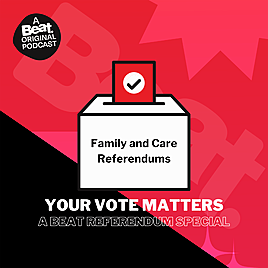
Morbid
It’s a lighthearted nightmare in here, weirdos! Morbid is a true crime, creepy history and all things spooky podcast hosted by an autopsy technician and a hairstylist. Join us for a heavy dose of research with a dash of comedy thrown in for flavor.
Subscribe to SiriusXM Podcasts+ to listen to new episodes of Morbid ad-free.
Start a free trial now on Apple Podcasts or by visiting siriusxm.com/podcastsplus.

The Mysterious Case of Sunny von Bulow
explicitWeirdos!! On today's episode Alaina announced the third chapter in the Wren Muller series- The Butcher Legacy . Be sure to visit to PREORDER NOW by visiting butcherlegacy.com. Order NOW to get exclusive signed editions from BN.com AND the Special Edition from Target! In the winter of 1980, wealthy socialite Martha “Sunny” von Bulow was found unconscious in the bathroom of the mansion she shared with her husband, Claus, in Newport, Rhode Island. An ambulance was called and Sunny was rushed to the nearest emergency room, but paramedics and doctors were unable to revive her and Sunny would remain in a coma until her death in 2008. At first, Sunny’s coma was a mystery to doctors, but soon suspicion fell on her husband, Claus, who appeared indifferent to her condition and was openly carrying on an affair with another woman. The family launched a private investigation and eventually turned up strong evidence they believed implicated Claus in the attempted murder of Sunny, but, as they soon learned, believing it and proving it were two very different things.
1 hour 8 mins
8 January Finished

The Pizza Bomber Conspiracy
explicitOn the afternoon of August 23, 2003, Erie, Pennsylvania pizza delivery driver Brian Wells walked into the local branch of the PNC Bank and handed the teller a note warning that he had a bomb and they had fifteen minutes to hand over $250,000 or it would detonate. Unable to access the vault, the teller gave Wells all the cash on hand and he left as the employees triggered the emergency protocol.
1 hour 8 mins
5 January Finished

The Shocking Murder of Terry King (Part 2)
explicitWhen firefighters discovered the body of forty-year-old Terry King inside the charred remains of his Cantonment, Florida home in November 2001, they assumed the man had been asleep when the fire broke out and died as a result. Upon further inspection, investigators found that King hadn’t died as a result of the fire, but from severe blunt force trauma to his head. And even more alarming than that was the fact that King’s two boys, thirteen-year-old Derek and twelve-year-old Alex, were missing. Having occurred immediately in the wake of the 9/11 terrorist attacks, Terry King’s murder could have easily been one of many tragedies lost in the fog of national trauma and grief; however, when King’s killers were arrested and identified in the days that followed, the story was so shocking, and the motive so heartbreaking, that it managed to break through the wall-to-wall coverage of the attacks.
1 hour 1 min
1 January Finished

The Shocking Murder of Terry King (Part 1)
explicitWhen firefighters discovered the body of forty-year-old Terry King inside the charred remains of his Cantonment, Florida home in November 2001, they assumed the man had been asleep when the fire broke out and died as a result. Upon further inspection, investigators found that King hadn’t died as a result of the fire, but from severe blunt force trauma to his head. And even more alarming than that was the fact that King’s two boys, thirteen-year-old Derek and twelve-year-old Alex, were missing. Having occurred immediately in the wake of the 9/11 terrorist attacks, Terry King’s murder could have easily been one of many tragedies lost in the fog of national trauma and grief; however, when King’s killers were arrested and identified in the days that followed, the story was so shocking, and the motive so heartbreaking, that it managed to break through the wall-to-wall coverage of the attacks.
52 mins
29 December 2025 Finished

Episode Revisit: The Schoolbus Kidnapping of 1976
explicitHappy Holidays Weirdos! For Alaina's Second Episode Revisit, she wanted to choose an episode that introduced us to a true hero! OG Notes: Guys, this Alaina "Mini" Morbid is a doozy. How did we never know about this harrowing tale of 26 children and their heroic bus driver who survived over 24 hours of terror while being buried alive? Seriously, this one if intense but it has a happy ending that will leave you satisfied....at least somewhat satisfied.
54 mins
25 December 2025 Finished





















